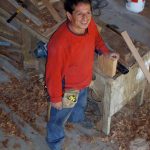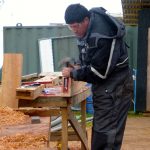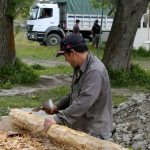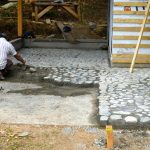We need to exalt and value ancestral and local trades, which, as in nature, there are many in danger of extinction. It is about adopting a stance from the artisanal point of view as opposed to the industrial.
We want to encourage working with an artisan aesthetic, recovering the trades that have been transmitted from generation to generation, and that are increasingly on the way to disappearing.
The idea is that most of the elements that are made, such as windows, doors, furniture, fireplaces, among others, are made by the hand of man, and thus the beauty of these objects reflects the elaboration time dedicated to them.
Although technology is at our entire disposal, we cannot subordinate ourselves to it, but rather use it as a tool for the development of construction processes. In this way, the local workforce is directly involved and involved.
We develop a kind of "Guerrilla Design", where, as the works progress, they attack to make adjustments and changes, and then withdraw, reflect, and look again from the outside at its evolution.
It seeks to work in a space, in a range between architecture and art, in the manner of a jazz ensemble, where each note succeeds the other in a space of time that is impossible to predetermine, and that appears in the moment. This requires frequent presence at construction sites.




















































